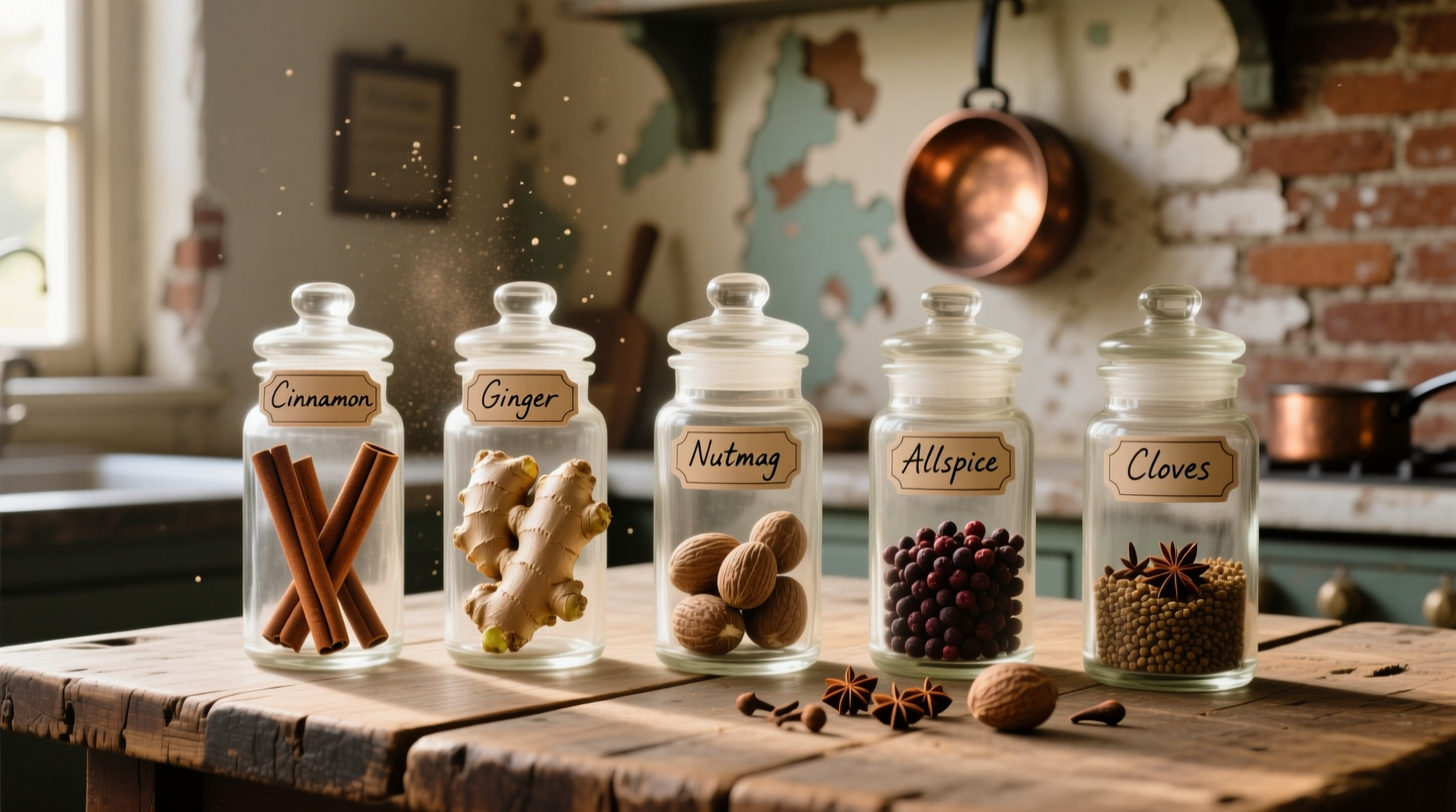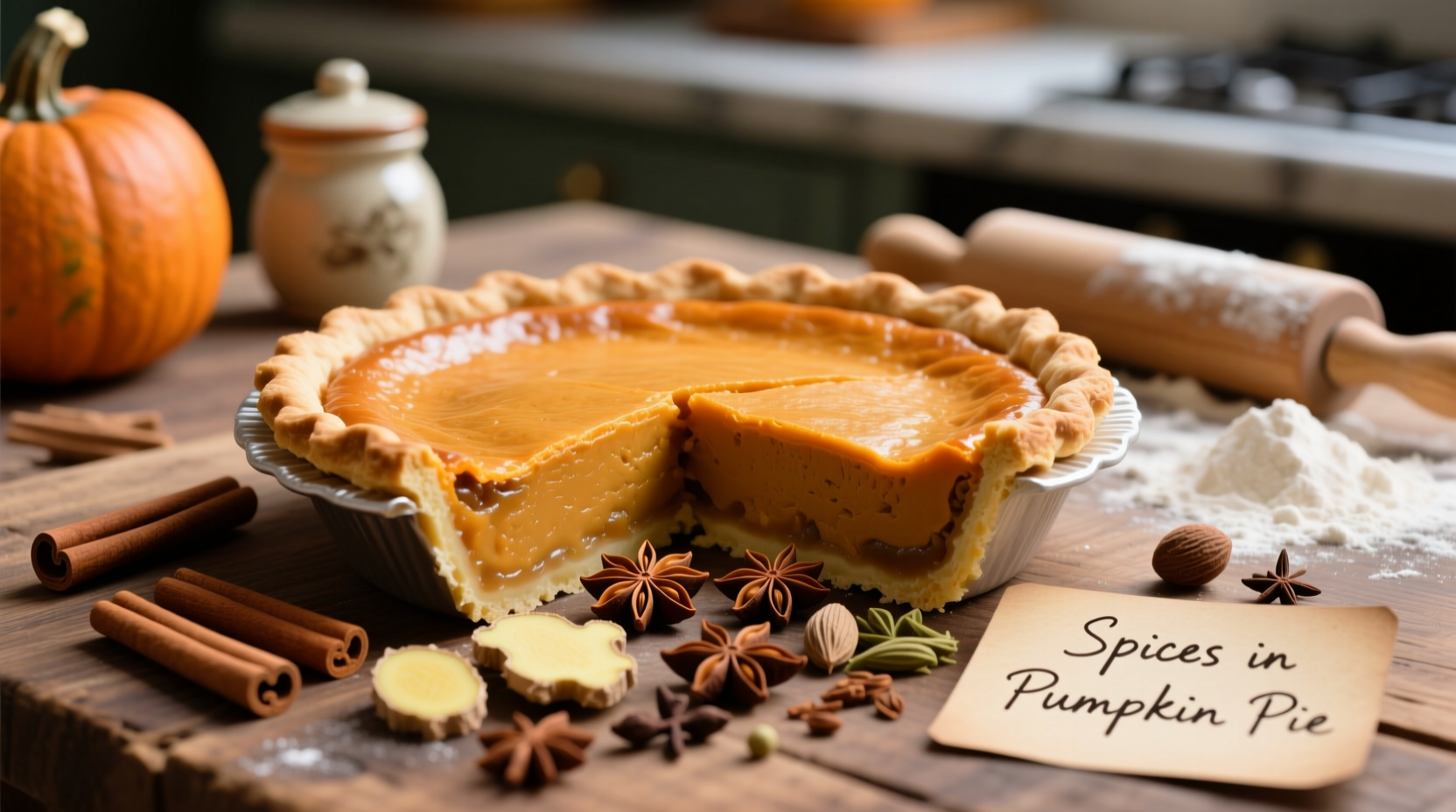Ever wonder why your pumpkin pie doesn't taste quite like the one your grandmother made? The secret lies in understanding the precise spice blend that creates that nostalgic fall flavor. Getting the spice combination right transforms your pumpkin pie from ordinary to extraordinary, capturing the essence of autumn in every slice. In this guide, you'll discover not just what spices are in a pumpkin pie, but how to use them effectively for perfect results every time.
The Essential Spice Blend: What's Really in Pumpkin Pie Spice
While many stores sell pre-mixed "pumpkin pie spice," understanding the individual components gives you control over your baking. The traditional blend consists of five core spices that work in harmony with pumpkin's earthy sweetness:
- Cinnamon - Provides the warm, sweet backbone (typically 50-60% of the blend)
- Ginger - Adds gentle heat and citrus notes (20-25%)
- Nutmeg - Contributes nutty, slightly sweet complexity (10-15%)
- Allspice - Offers clove-like, peppery warmth (5-10%)
- Cloves - Provides intense aromatic depth (2-5%)
According to the USDA Agricultural Research Service, these spices contain volatile compounds that interact synergistically with pumpkin's natural sugars during baking, creating the complex flavor profile we associate with traditional pumpkin pie.

Getting the Proportions Right: The Secret to Balanced Flavor
Many home bakers make the mistake of using equal parts of each spice, which creates an unbalanced flavor. Professional bakers follow these proportions for authentic results:
| Spice | Standard Proportion | Flavor Impact |
|---|---|---|
| Cinnamon | 2 1/2 teaspoons | Warm, sweet foundation |
| Ginger | 1 1/2 teaspoons | Gentle heat and brightness |
| Nutmeg | 1 teaspoon | Nutty complexity |
| Allspice | 1/2 teaspoon | Peppery warmth |
| Cloves | 1/4 teaspoon | Intense aromatic depth |
This ratio follows the traditional proportions documented in Northern Illinois University's Culinary History Archives, which show consistent patterns in American cookbooks dating back to the 1890s. The dominance of cinnamon creates a familiar warmth while the smaller amounts of stronger spices provide complexity without overwhelming the delicate pumpkin flavor.
Fresh vs. Pre-Mixed: Quality Considerations
While convenient, store-bought pumpkin pie spice blends often contain fillers and lose potency quickly. For the best results:
- Use whole spices when possible - Freshly ground nutmeg and whole cinnamon sticks provide significantly more flavor
- Check expiration dates - Ground spices lose potency after 6-12 months
- Store properly - Keep spices in airtight containers away from light and heat
- Make your own blend - Mix spices fresh for each batch of pie
The USDA National Institute of Food and Agriculture confirms that freshly ground spices contain up to 40% more volatile flavor compounds than pre-ground versions, directly impacting the final taste of your pie.
Advanced Techniques for Maximum Flavor
Professional bakers use these techniques to elevate their pumpkin pie spice game:
Dry Toasting for Depth
Lightly toast whole spices in a dry skillet over medium heat for 1-2 minutes before grinding. This releases essential oils and creates deeper, more complex flavors. Be careful not to burn them - the spices should become fragrant but not darkened.
Infusing the Milk or Cream
For custard-based pies, steep whole spices in your dairy mixture for 30 minutes before straining. This creates a more integrated flavor throughout the pie rather than just on the surface.
Layering the Spices
Add half your spice blend to the pumpkin mixture and the other half to the egg mixture. This creates flavor layers that develop differently during baking.
Troubleshooting Common Spice Issues
Problem: Spice flavor is too harsh or bitter
Solution: You've likely used too much cloves or allspice. Reduce these stronger spices by half next time. Freshly ground nutmeg should be used sparingly as it can become bitter.
Problem: Spice flavor disappears after baking
Solution: Your spices may be stale. Test freshness by rubbing a small amount between your fingers - if the aroma is weak, it's time for new spices.
Problem: Spices create a gritty texture
Solution: Ensure you're using finely ground spices or grind them yourself. Whole spice particles won't dissolve properly in the custard.
Regional Variations and Modern Twists
While the standard blend remains consistent, regional variations have emerged:
- New England - Often includes a pinch of mace for additional complexity
- Midwest - Sometimes adds cardamom for floral notes
- Modern interpretations - May include black pepper for subtle heat or star anise for licorice notes
When experimenting with variations, remember that the traditional blend has endured because it creates perfect harmony with pumpkin. Start with the standard proportions, then make small adjustments to suit your taste.











 浙公网安备
33010002000092号
浙公网安备
33010002000092号 浙B2-20120091-4
浙B2-20120091-4